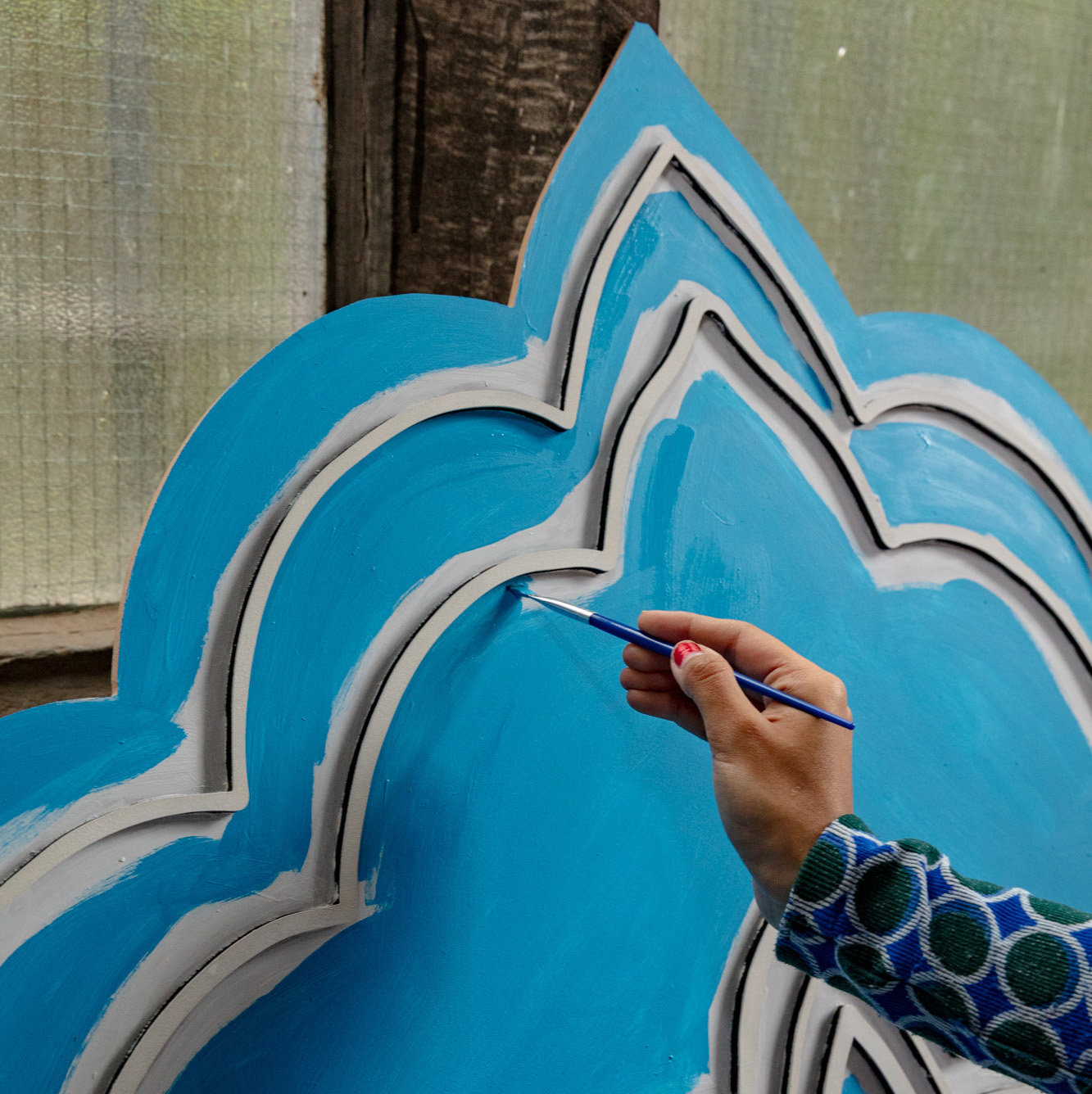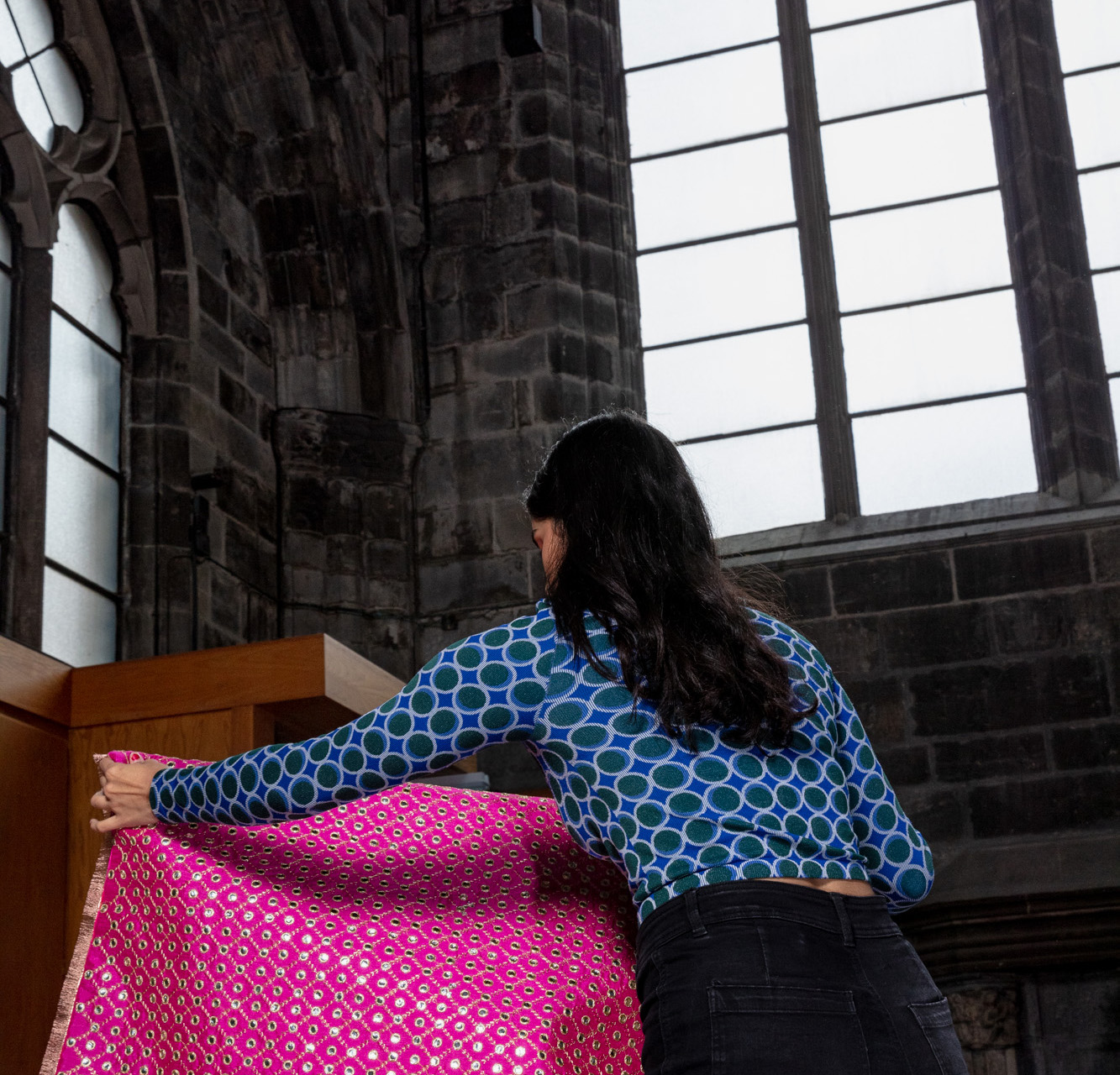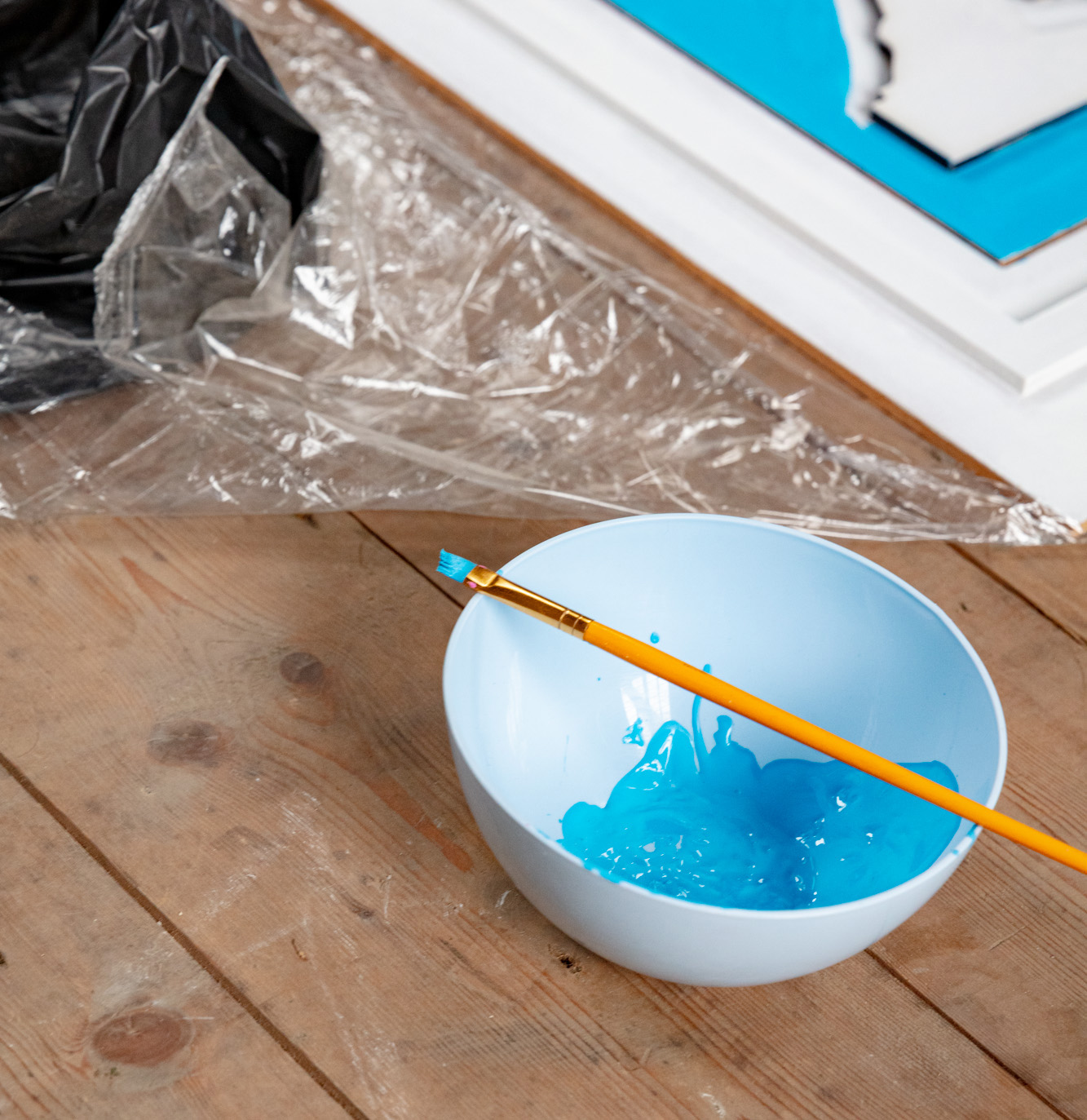Artists Make a Better World: Aqsa Arif

SCAN’s summer 2023 campaign Artists Make a Better World aims to highlight the vital work that artists carry out in our society today. Aqsa Arif is a Scottish/Pakistani artist based in Glasgow, who works across poetry, photography, installation, printmaking and film to explore the surreal nature of the human psyche. Her work is underpinned by her dual cultural heritage, mirroring the experience of many people in Scotland today.
Aqsa is one of four artists chosen for this year’s Platform, Edinburgh Art Festival’s exhibition for emerging artists, where she exhibits a new work Sohni – Heera. She has also spent 15 months researching the South Asian collections at Kelvingrove Art Gallery and Museum, culminating in a new installation that highlights the impact of colonial histories on both museum collections and real lives.
In this Q&A, Aqsa speaks to SCAN Communications Lead Claire Biddles about her current and upcoming work, and the importance of the Scottish art community to her development.

Can you tell us about the work you have made for Platform at Edinburgh Art Festival?
Sohni – Heera, is a new multi-media installation which delves into two distinct South Asian female archetypes. The heroine Sohni from the folk stories known as the Seven Queens of Sindh, who inhabited moral fortitude against all odds. The second archetype is of the Tawaif, an elegant courtesan and entertainer from the Mughal Empire era. This tradition, once highly esteemed, succumbed to the moral influences of British colonialism.
Sohni and Heera represent the dual female representation of heroine vs courtesan within South Asian popular culture. Their contrasting yet intersecting narratives are represented through sculpture, screenprint, painting and textiles. I use these characters as a mirror to reflect on my own experiences of dual identity, cultural dissonance and the female as a vessel of cultural morality.
Your work is installed within the historic environment of Trinity Apse in Edinburgh. Did you consider this context at all when creating and installing the work?
I was pleasantly surprised when we found out the exhibition would be in the beautiful and historic gothic chapel at Trinity Apse. Informed by my research into pre-colonial Mughal architecture, characterised prominently by its pervasive implementation of arches, my sculptural motifs found their genesis. The convergence of these motifs within the distinct realm of Western Gothic architectural confines assumed a profound relevance, effectively mirroring the intricate interplay of my dual cultural heritage.
Equally compelling was the narrative surrounding the church’s stolen bricks, pilfered during its geographical relocation. This historical episode resonated deeply with me, casting a meaningful light upon the thematic undercurrents threading through my work. The themes of which prominently centre around the untold stories of women marginalised by the sway of colonial values in South Asia, found striking resonance through this historical lens.

Your upcoming project highlighting South Asian narratives in the collection at Kelvingrove Museum sounds really interesting and vital. What conversations do you hope it will open up to visitors?
Anam ki Almari (The Trophy Cupboard),is a multimedia installation, which will host a short film, sculptural façade and ceramic works in response to a 15 month residency researching the South Asian collections within Kelvingrove Art Gallery and Museum. This exhibition opens in October this year as part of a permanent acquisition and national commissions project by UAL’s Decolonising Arts Institute.
The project’s focus on the Glasgow International Exhibition and the Indian Pavilion underscores an effort to creatively reframe historical contexts and narratives. By delving into rituals, traditions, and the collaborative act of creation, I aim to prompt discussions about the ways in which marginalised communities have harnessed these elements to counter subjugation. This approach invites visitors into a discourse surrounding the power of cultural expression as a means of overcoming the legacy of colonial dominance.
The strategic utilisation of the human form to represent objects and concepts within the installation serves to amplify this message. By reimagining these objects as authentic embodiments of their inherent value rather than mere ornamental tokens, I want tocreate a potent visual metaphor for the reclamation of agency and identity. This transformation evokes conversations about the complex interplay between material culture, historical representation, and the significance of personal and collective stories.
Furthermore, the introduction of fictionalised characters and their narratives within the installation adds depth and relatability to the project. This approach serves as a bridge between historical events and contemporary experiences, effectively conveying that the repercussions of cultural appropriation extend beyond the object itself. The incorporation of human experiences conveys the emotional toll of such appropriation, inviting visitors to engage with the profound impact of colonial histories on real lives.

As well as working as an artist, you have also worked as Production Manager for Alberta Whittle, and were the founder of SaltSpace Co-op in Glasgow. Does working with other artists in these roles affect your own work? What is your wider experience of the artist community in Scotland?
Engaging with Glasgow’s vibrant contemporary art scene has been instrumental in shaping my growth as an artist. Beyond my personal creative journey, I’ve ventured into roles that have allowed me to contribute meaningfully to the artistic community. Graduating into the art world can be daunting, and recognising this, I played a role in establishing Saltspace Co-operative alongside fellow graduates who shared the desire for a supportive and collaborative environment. This cooperative spirit emerged from the conviction that no artist should be left isolated or bewildered after completing their studies. Through this initiative, I discovered the immense value of working alongside other artists and creatives who were navigating the initial stages of their careers. The concept of a collective of like-minded individuals, united in their pursuit of growth, resonated deeply.
A pivotal chapter in my artistic journey involved working with the exceptionally giving artist, Alberta Whittle. This experience became an enlightening period of personal growth. It enabled me to understand the trajectory of a successful artist, learning not only from their creative prowess but also from their approach to collaboration and the inclusive integration of fellow artists into their practice. This partnership expanded my understanding of what it means to foster a nourishing artistic environment, where individuals mutually contribute to each other’s development.
My broader encounter with the Scottish artist community has illuminated a prevailing sense of generosity, open sharing, and camaraderie. While artistic pursuits can often entail competition for opportunities and contend with limited financial support, the solidarity within the community remains strong. Despite these challenges, artists consistently offer support and care, building a collective framework that transcends individual struggles.
Platform is at Trinity Apse as part of Edinburgh Art Festival, 11-27 August 2023. Anam ki Almari (The Trophy Cupboard) is at Kelvingrove Art Gallery and Museum, September 2023 – January 2024.
See the project page for more information and resources related to Artists Make a Better World.
Photography by Alexander Hoyles.
